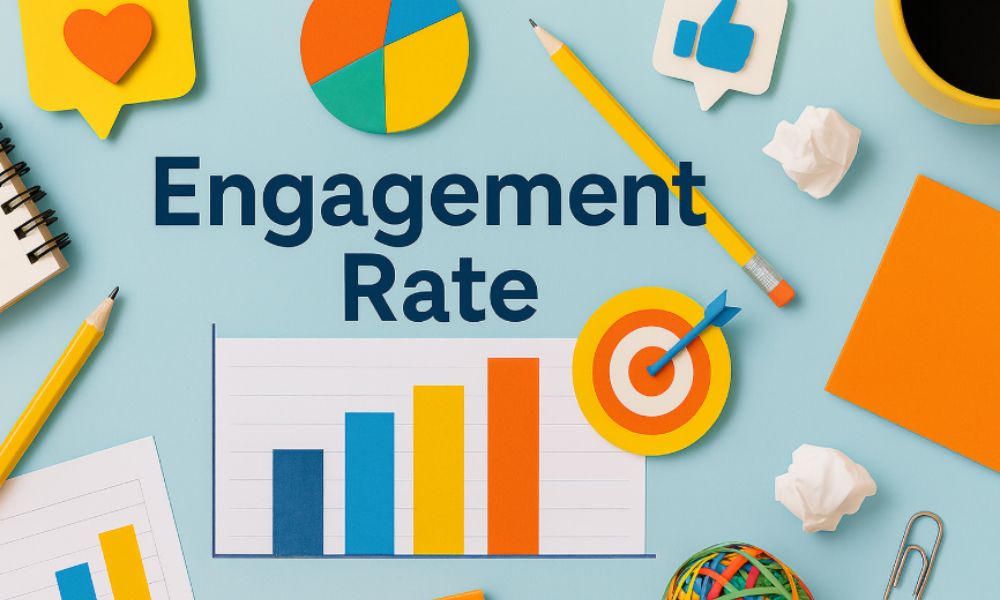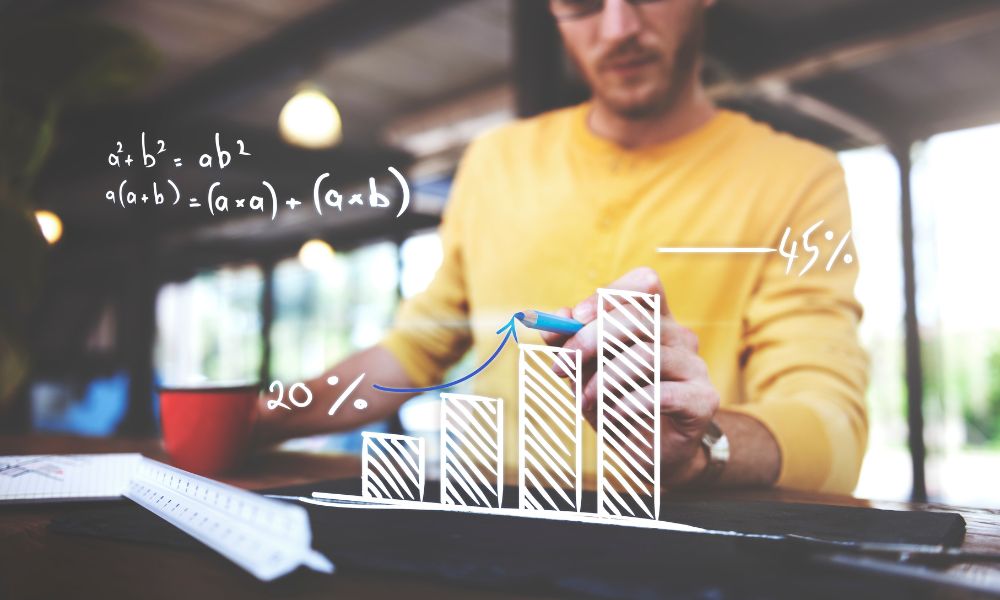
You refresh your analytics and see two posts with the same 120 likes. One reached 4,000 people, the other reached 900. Which one actually performed better? This is where ‘what is engagement rate’ stops being a trivia question and becomes the metric that explains what your audience did, not just how many saw it.
Engagement rate looks at actions that signal interest and intent. Comments that open conversations. Shares that put your content in new feeds. Saves that say “I want this later.” Clicks that move people to your site. By relating these actions to your audience size or visibility, engagement rate tells you whether a post resonated or just occupied space.
For brands, creators, and agencies, this number guides real decisions. It helps you choose the right partners, compare formats, defend budgets, and understand why one Reel sparked replies while another stalled. It also keeps reporting honest by separating strong creative from simple reach spikes.
In this guide, you’ll get a clear definition, every common formula with quick examples, and a simple way to pick the right one for your goal. You’ll also see up-to-date benchmarks by platform and creator size, plus a practical playbook to lift your rate without gimmicks. Finally, we’ll cover reporting tips and common mistakes so your numbers stay consistent and useful.
What Is Engagement Rate? A Simple Definition
Engagement rate is the percentage of people who interacted with your content out of a specific baseline. The baseline can be your followers, the number of people who saw the post, or the number of impressions. Interactions are the signals that show interest.
What counts as an engagement?
- Likes and reactions
- Comments and replies
- Shares and reposts
- Saves and favorites
- Clicks on links, profile, or CTA buttons
- Video interactions such as plays, rewatches, stitches, duets, and remixes
Not every platform treats each action the same. You can keep it simple with an unweighted count of all meaningful actions, or use a weighted model if your team values comments and shares more than likes.
Why it matters
- Signals relevance to algorithms: Early and consistent engagement tells ranking systems that your post is useful. That signal often results in more distribution.
- Builds trust with your audience: Comments, saves, and shares reflect real interest. Over time they point to a community that is listening, not just scrolling.
- Correlates with visibility and results: Higher engagement rates often come with better reach, stronger click-through, and healthier conversion paths. The metric helps you separate content that resonates from content that only looks good because of raw exposure.
Higher engagement rates often come with better reach, stronger click-through, and healthier conversion paths. This is one of the core influencer marketing advantages, as influencer-led content often drives higher interaction compared to traditional media.
Engagement vs reach vs impressions
These three are related but not interchangeable.
- Reach: the number of unique people who saw your content.
- Impressions: the total number of times your content was shown. One person can generate several impressions.
- Engagement: the actions people took on that content.
- Engagement rate: engagements divided by a chosen baseline, then multiplied by 100.
Quick examples:
- You post a Reel.
- Reach: 5,000 people
- Impressions: 6,800 views
- Engagements: 340 total actions
- ER by reach: 340 ÷ 5,000 × 100 = 6.8%
- ER by impressions: 340 ÷ 6,800 × 100 = 5.0%
- You publish a LinkedIn update.
- Followers: 20,000
- Reach: 2,400
- Engagements: 96
- ER by followers: 96 ÷ 20,000 × 100 = 0.48%
- ER by reach: 96 ÷ 2,400 × 100 = 4.0%
Different baselines answer different questions.
- By followers helps when comparing creators or profiles.
- By reach shows how the post performed with the people who actually saw it.
- By impressions is useful when impressions are your main reporting unit, especially in paid mixes or when a post receives multiple views per person.
How To Calculate Engagement Rate (All Common Formulas)
There is no single universal formula for engagement rate. The most accurate calculation depends on your specific goal, as each formula provides a different lens for interpreting performance. Choosing the right one is fundamental to gaining meaningful insights.
I) ER by followers (ER post)
This is the most common formula, providing a high-level view of how your total audience interacts with your content.
Formula: ER% = (Total engagements ÷ Followers) × 100
Example: A post earns 240 engagements. The account has 12,000 followers.
240 ÷ 12,000 × 100 = 2.0%
Use when: Comparing creators or profiles, or tracking your own profile over time.
Watch out for: Follower inflation, inactive followers, and the fact that not all followers see every post.
II) ER by Reach
This formula measures how effective your content was at engaging the specific people who actually saw it.
Formula: ER% = (Total engagements ÷ Reach) × 100
Example: 310 engagements, 7,200 people reached.
310 ÷ 7,200 × 100 = 4.31%
Use when: Judging how a post performed with the people who actually saw it. Ideal for campaign reports that combine organic and paid.
Watch out for: Reach is de-duplicated users, so this ratio is not directly comparable to follower-based ER.
III) ER by impressions
This calculation is useful for understanding engagement relative to the total number of times your content was displayed.
Formula: ER% = (Total engagements ÷ Impressions) × 100
Example: 500 engagements, 18,400 impressions.
500 ÷ 18,400 × 100 = 2.72%
Use when: Impressions are your reporting baseline, especially with paid mixes or content that gets multiple views per person.
Watch out for: Impressions can be much higher than reach, which will lower the rate. Compare posts that use the same baseline.
IV) ER by views (video, Reels, TikTok, Shorts)
For video content, using views as the denominator can provide a more relevant metric, as the primary goal is often viewing.
Formula: ER% = (Total engagements ÷ Video views) × 100
Example: 1,200 engagements, 40,000 views.
1,200 ÷ 40,000 × 100 = 3.0%
Use when: Evaluating video performance where views are the primary exposure metric.
Watch out for: View definitions vary by platform and can include auto-plays or loops. A high view count from replays can deflate ER by views. Pair with retention and average watch time for a fuller picture.
Which Formula Should You Use?
The optimal formula depends entirely on the question you are trying to answer. Mapping use cases to the formulas provides clarity.
- Creator vetting and profile comparisons: ER by followers
- Campaign reporting and post-performance: ER by reach
- Content testing in ad-heavy mixes or multi-view formats: ER by impressions
- Short-form video and watch-centric goals: ER by views
Selecting the appropriate formula ensures you are measuring what truly matters for your specific objective, moving beyond a one-size-fits-all approach. Pick one primary baseline for your report and stick to it. If you need to show more than one, label them clearly and avoid cross-mixing rates from different baselines in the same chart.

What Is a “Good” Engagement Rate? (Current Benchmarks)
There is no single “good” number. Benchmarks depend on the platform, how you calculate the rate, audience size, and niche. Treat the figures below as directional, then compare yourself with peers that use the same formula.
Instagram averages and context
Across industry reports in 2025, Instagram’s average engagement rate sits around the half-percent mark when measured broadly, with multiple studies noting a year-over-year decline. Socialinsider places the average at about 0.45% in the first half of 2025, and highlights format effects such as carousels earning more saves and Reels driving more comments. Rival IQ also reports platform-wide drops in engagement rates this year.
TikTok tends to be higher
TikTok generally outperforms other networks on organic engagement. Depending on the methodology, 2025 averages are reported around 2.5% on a follower-based view and closer to 4–5% when calculated by views. Smaller accounts often post stronger rates than larger ones.
Benchmarks by creator size (rule of thumb)
Use these as a quick Instagram cheat sheet. They are follower-based and vary by niche:
- Nano (1k–5k): ~4–5%
- Micro (5k–50k): ~2.5–3.5%
- Mid (50k–500k): ~2–2.5%
- Macro/Mega (500k+): ~1–2%
These tiers reflect broad patterns seen in influencer datasets and illustrate the size effect where rates tend to decline as audiences grow.
Why sources disagree
- Different formulas. Some reports use engagement per followers, others per reach, impressions, or views. For example, one summary defines Instagram ER per post as likes plus comments divided by followers, which will not match a reach-based or view-based calculation. socialmediatoday.com
- Different time windows and samples. Benchmarks can shift with quarterly trends, industries sampled, or creator vs brand accounts. Emplifi’s quarterly updates, for instance, show category and timing effects that move the averages.
Outliers happen – expect spikes. Certain industries and moments buck the averages. For example, Higher Education on TikTok is frequently cited as an unusually high-engagement sector in 2025, well above the overall median. Viral posts and timely trends can push single-post rates far beyond typical ranges.
How To Improve Engagement Rate (Practical Playbook)
Improving engagement rate is less about tricks and more about building habits that keep people interacting with your content. These approaches apply across platforms but can be tailored to fit the strengths of each channel.
1. Content levers
The foundation of engagement is content that compels a response. This begins in the first moments a user sees your post.
- Lead with a hook. The first three seconds of a video or the opening line of a caption decide whether someone stops scrolling. Ask a specific question, state a clear promise, or highlight a surprising fact.
- Be direct with calls to action. Invite readers to comment, save, or share. Clarity works better than vague cues.
- Choose formats intentionally. On Instagram, carousels often earn more saves while Reels can drive higher comments. Match your goal to the content type.
2. Audience & timing
Engagement is a function of reaching the right people at the right time with the right message.
- Post when your audience is present. Use native platform insights to identify when your specific audience is most active online. Publishing during these peak windows increases the likelihood of initial engagement, which signals to the algorithm to show your content to more people.
- Lean into proven topics. Analyze your past content to identify topics that naturally spark conversation and debate. How-to guides, opinion pieces, and posts that ask for personal experiences tend to generate more substantive comments than simple affirmations.
3. Format tactics
Different content formats naturally drive different types of engagement. A strategic approach involves using a mix tailored to your objectives.
- Short-Form Video for Reach: Platforms prioritize video. Use Reels, Shorts, and TikToks to maximize your content’s potential distribution and attract new audience members.
- Carousels for Saves: Informative, step-by-step content packaged in a carousel is highly likely to be saved by users for future reference, a strong positive engagement signal.
- Live/Q&A for Depth: Hosting live sessions or Q&As creates real-time, high-value interaction. This format builds deep rapport and loyalty, turning casual followers into a dedicated community.
4. Community management
Publishing content is only half the battle. Active participation in the conversation you start is critical.
- Reply quickly: Responding to comments promptly, especially within the first hour after posting, encourages further interaction and shows your audience that you are listening.
- Pin strong comments: Pin a thoughtful comment or your own prompt to the top of the comments section to guide the conversation and highlight valuable contributions from your community.
- Ask specific questions: Move beyond “yes” or “no” questions. Ask open-ended questions that require a personal opinion or story, which invite more meaningful replies.
5. Testing & iteration
There is no one-size-fits-all formula. Continuous improvement is powered by data-driven experimentation.
- Run small A/B tests. Experiment with captions, thumbnails, or posting times. Track engagement per reach or impressions to keep comparisons fair.
- Measure by format. Compare ER across video, static, and carousel posts to see which consistently delivers.
- Refine and repeat. Archive results, double down on what works, and drop what stalls.
Avoid vanity lifts. Giveaways, tag-to-win contests, or click-bait headlines can temporarily boost engagement numbers. The problem is that these spikes rarely sustain meaningful interaction and can even dilute audience quality over time. Aim for steady growth driven by authentic content rather than short-term tricks.

Reporting Tips & Common Mistakes
Accurate measurement is the foundation of an effective strategy. How you track and report your engagement rate determines the quality of your insights. Avoiding common pitfalls ensures your data reflects reality and guides your decisions correctly.
1. Pick one primary formula and stick to it
Switching between follower-based, reach-based, or impression-based formulas in the same report can distort trends. Choose one baseline as your standard and apply it consistently. If you need to show multiple versions, label them clearly and explain why they differ. This keeps your comparisons apples-to-apples across posts, campaigns, and time periods.
2. Separate paid from organic
Paid promotion can inflate reach or impressions without guaranteeing quality interactions. Always report paid and organic engagement rates separately, or normalize them to the same baseline (for example, ER by reach). This separation helps you see which posts work because of creative strength and which rely on ad spend.
3. Factor in audience size effects
Engagement rate typically declines as audience size grows. A nano creator with a few thousand followers may average 5% ER, while a macro account with half a million followers may average 1%. Both can still deliver value, but they belong in different tiers. When benchmarking, compare accounts within similar follower ranges instead of holding everyone to the same number.
4. Beware fake or low-quality engagement
Not all interactions are meaningful. Warning signs include:
- Sudden spikes with no clear reason
- Generic or mismatched comments that look automated
- A high ratio of likes to comments or shares, suggesting shallow engagement
- Engagement patterns that don’t match reach or impressions
Filtering out low-quality interactions prevents inflated reporting and protects against misleading conclusions.
5. Build a simple ER dashboard
Effective reporting does not require complex tools. A well-structured dashboard in a spreadsheet can provide powerful insights.
Key metrics to track:
- ER by Post: Monitor individual post performance to identify winning content themes and formats.
- Rolling 30/90-Day Average ER: This smooths out daily fluctuations and reveals long-term trends.
- ER by Format: Compare the average engagement rate of Reels, carousels, and single-image posts to guide your content strategy.
A simple dashboard ensures you are always monitoring the right signals, allowing you to optimize based on accurate data.
Engagement Is a Conversation, Not a Number
Engagement rate is one of the simplest metrics in social media, but it carries weight far beyond the math. It tells you if people are paying attention, if your content is sparking reactions, and if your community is strong enough to move from passive viewing to active participation.
The formulas matter, the benchmarks help, and the dashboards keep you consistent. Still, the real value lies in the story behind the numbers. A thoughtful comment, a save for later, or a share that extends your reach is a sign of trust. When you focus on building genuine interaction, the percentage on your report becomes proof of connection rather than just a KPI.
Engagement is also central when you work to build brand reputation, since authentic interaction shapes how audiences perceive your brand over time.
The goal is not to chase a perfect rate, but to create content and experiences that people want to respond to. Treat every like, comment, and click as part of an ongoing conversation with your audience. If you keep the focus on people, the numbers will follow, and they will mean more.
If you want to take engagement rate from a reporting number to a growth driver, the right tools make a difference. With Hypefy’s influencer discovery tool and influencer outreach tool, you can find creators with proven engagement, connect with them, and run campaigns that build genuine interaction, no spreadsheets required.



